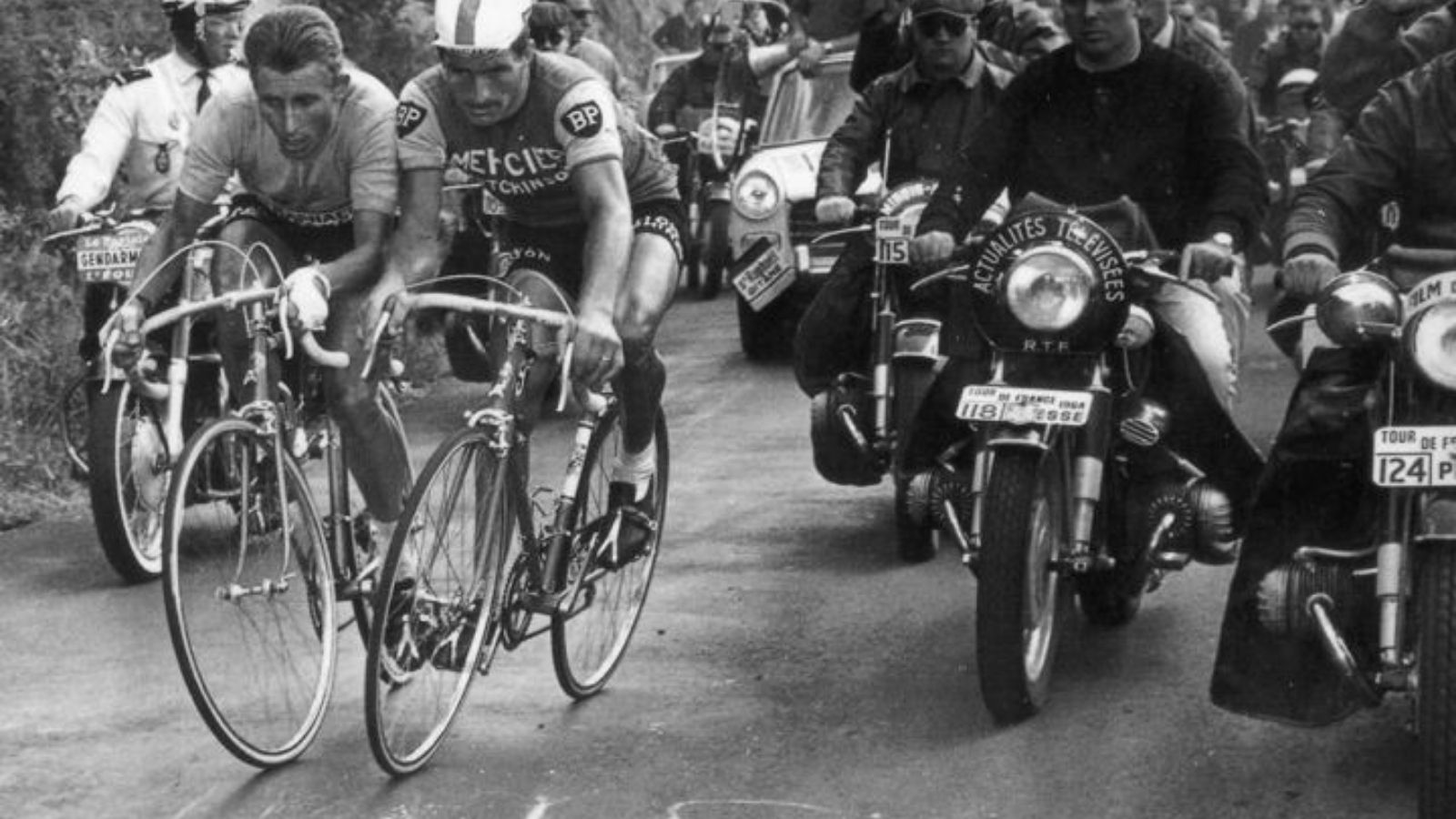Tour de France 2023 presented a great gift for every road cycling history fans: after 35 years Puy de Dôme was reintroduced to the race. Although the 9th stage of Tour de France 2023 was only the 14th appearance of the ascent, it became one of the most iconic places in the history road cycling thanks mainly to the epic battle between Jacques Anquetil and Raymond Poulidor in 1964.
Nestled in the heart of the Massif Central in central France, Puy de Dôme is a lava dome and one of the youngest volcanoes in the Chaîne des Puys region. The ascent was introduced to Tour de France in 1952 and had frequent appearance until 1988. During the subsequent decades constructions of a railway further narrowed the already narrow road to the top, creating unfavourable circumstances for professional road cycling races, especially for a stage of Tour de France.
With allowing no spectators and only the necessary numbers of background crews and journalists, in 2023 organizers found a safe solution to reintroduce the ascent, despite its narrow road, to the race.
PelotonTales blog focuses on the history of road cycling races, thus in the following, this post intends to recall some of the most iconic momenst of Puy de Dome from the time period betwen 1952 and 1988.
The beginning (introduction of Puy de Dôme)
When Tour de France visited the place for the very first time, it was the year, 1952, when hilltop finishes were introduced to the race. Alpe d'Huez, Sestriere and, in the 21th of 23 stages, Puy de Dôme.
1952 was the year of the absolute dominance of Fausto Coppi. He won all three stages ending on a summit and had a lead so large, that the organizers had to offer double prize money for the second place to motivate the rest of the peloton.
If you like PelotonTales blog, you can support it with a small donation!
The legend (mythicizing Puy de Dôme)
The 20th stage of Tour de France 1964 delivered a spectacl, that is still considered as one of the greatest moments in history of road cycling races.
Before the stage, Jacques Anquetil led the general classification with 56 sec ahead of Raymond Poulidor. Federico Bahamontes, third in the GC was already more than 3 minutes behind the leader of the race.
The 20th stage was 237,5 km long, and besides Puy de Dôme, it included also St. Privat.
After the first km of the ascent, only Anquetil, Pulidor, Bahamontes, Julio Jimenez and Vittorio Adorni remained at the front of the race. Soon, Adorni dropped after an attack of Bahamontes and Jimenez.
From a strategical point of view, this was an advantageous situation for Anquetil in the battle for the yellow jersey against Poulidor, because the two riders at the front earned the time bonuses, but they were far from being any danger to the race leader position, thus Anquetil had to focus only on his only real rival.
They rode literally shoulder by shoulder together, as the famous image taken on that day shows it.
Anquetil decided not to put his wheel behind Poulidor, which would have been more reasonable. He wanted to wear a psychological battle.
Neverteless, Poulidor attacked a few times, but couldn't drop his rival until they reached the Flammes Rouge.
Inside the final km, Poulidor was finally able to ride away from Anquetil and finished third behind Jiménez and Bahamontes. After the stage, he was only 14 sec behind Anquetil, but could never turn the tide.
It was definitelly the closest moment Poulidor ever had the possibility of winning the Tour de France.
Other editions
Puy de Dôme welcomed a moutain time trial twice. In 1959, this was the 15th of 22 stages, only 12 km long, won by Bahamontes, the winner of Tour de France that year. However, the Spaniard took over the lead in the GC only a few days later.
Another occasion when the riders had to fight against the time happened in 1983. It was a 16, 5 km long ride up to the top, won by Ange Arooyo. At this point of the race, Pascal Simon was still in the lead, although he suffered a serious crash in the 11th stage. He gave up only in the 17th stage, making Laurent Fignon the leader of the race. (And Fignon was able to keep his position till Paris.)
FACES FROM THE PELOTON
What happened to Eddy?
Although Eddy Merckx never won a stage up to Puy de Dôme, the place still managed to play an important role in the mitology of the Cannibal.
The 14th stage in 1975 was that scandalous day, when the man is yellow, Merckx was punched in his gut by a spectator. He finished the stage, could save his leading position, but on the next day he lost the yellow jersey.
The 15th stage of 1975 was the historical day when Eddy Merckx wore the yellow jersey for the very last time.
He skipped the race in 1976 and was no more at his top form at the subsequent edition in 1977.
Never say never (reintroducing Puy de Dôme)
The 9th stage of Tour de France 2023 on the 9th of July witnessed a historical moment:
Puy de Dôme was finally back.
It was a bit unusual without spectators on the final few kilometers, but the place still brought drama in the race. Matteo Jorgensen escaped from a breakaway group with little less than 50 km to go, rode an epic solo, but was caught by Michael Woods with only 500 meters before the finish line.
